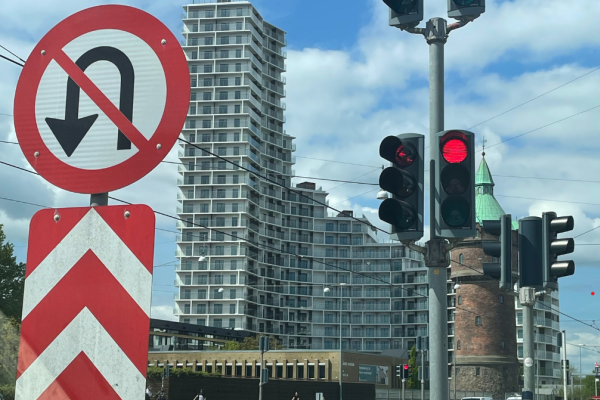
How are Innovative Actions leveraging Culture & Cultural Heritage?
These examples aim to inspire and trigger new ideas in cities looking for creative ways to address their urban challenges under the current Third Call for Innovative Actions.
Background - the role of culture and cultural heritage in urban development
As Europe’s cities explore opportunities for sustainable urban development, culture and cultural heritage are a key resource. They provide existing assets on which to develop strategic approaches and projects. This includes both tangible physical assets such as buildings, monuments and landmarks, as well as more intangible assets such as cultural events, practices and identity.
Culture and cultural heritage can provide:
- An economic resource, based on assets including specific local products, practices or tourist attractions, which can attract money and investment into the local economy.
- A social resource, including key locations or events to bring the community together or spaces to provide community services, supporting social cohesion and inclusion.
- An ecological resource, including in the form of traditional sustainable practices, green and blue infrastructure and community engagement, helping to reduce and mitigate the impacts of climate change.
At the same time, culture and cultural heritage can also create urban development challenges. For example, particularly attractive cultural heritage can lead to risks of over-tourism with serious associated negative impacts on the local environment (pollution, waste etc.) and community (housing costs, access to affordable goods and services etc.). In many cases, cultural heritage can also mean ageing infrastructure, requiring significant ongoing maintenance costs.
There is also the simple reality that Europe’s cities are not starting with a blank slate. New projects, developments and approaches need to be rooted in what already exists within the city. Finding new and creative ways to work in harmony with existing heritage or to make use of old or disused cultural heritage offer significant potential benefits for the future, as well as maintaining links with the past.
Here we look at a few illustrative examples from the 36 currently ongoing Innovative Actions selected under the first two EUI calls.
In practice - using cultural heritage as a social lever
Two ongoing EUI Innovative Actions are specifically looking at how cultural heritage can be used as a lever to address social issues, particularly related to mental health issues among young people.
The ImperfectCity project in Aarhus, Denmark combines several ideas outlined above. It firstly recognises the value of its existing built heritage, despite the often negative perceptions and increasing disrepair of buildings in the brutalist architectural style of the 1960s and 70s. It then explores how to make use of this heritage to address social issues in terms of another element of the city often perceived negatively: young people with mental health issues.
The proposed solution involves the restoration and adaptation of a landmark brutalist building at risk of demolition (the ‘Kulturhus Bunkeren’) in order to host a community centre and social and employment services for youth prone to mental health issues. The solution also involves climate-proofing the building. The physical interventions are combined with innovative methods to engage community members and overcome the stigma attached to both brutalist buildings and mental health patients.
Meanwhile, the We-Z project in Rome, Italy (District III – Montesacro) also seeks to link the regeneration of relatively outdated urban built heritage with new approaches for addressing the well-being of young people (‘generation Z’) and promoting environmental sustainability. Specifically, it seeks to regenerate a neglected 1970’s public housing complex (‘Vigne Nuove’) through a transitional model - establishing a ‘healing community’ in which people with diverse social and mental health conditions are engaged in co-creating a newly named ‘We-Z park’.
The project seeks to stimulate and create bonds between people and their local places, promoting ideas of enjoyment, common good and productive ecosystems. It combines interventions that promote citizen engagement, job creation and increasing green and public facilities, with innovative approaches that seek to valorise ‘living heritage’ in terms of local memories and the consideration of emotional parameters in processes of adaptive re-use.
In practice - using cultural heritage as an environmental lever
Both of the above-mentioned projects contained important environmental components within their urban regeneration interventions, such as energy-efficiency measures or the creation of green spaces. However, projects can also focus even more strongly on the links between cultural heritage and environmental sustainability.
One such project is the S4T project in Rovereto, Italy, which is working to transform its disused train station into a territorial ‘think&action tank’, focused on tackling climate change and biodiversity challenges. This project takes this important heritage landmark in a prime location within the municipality and regenerates it from an outdated and disused mobility hub to a modern and functional civic engagement hub.
The spaces will be turned into interactive venues for training, co-design, co-production and knowledge transfer for promising public, civic and economic initiatives on climate change and biodiversity. It thus seeks to deliver joint actions to promote green, inclusive and cohesive lifestyles starting from local heritage.
A somewhat similar project, the Viana S+T+ARTS Centre in Viana da Costelo, Portugal, also seeks to regenerate an important disused and outdated landmark building into a modern functional space. Specifically, it is turning a former slaughterhouse into a creative hub combining science, technology and the arts to co-create unconventional solutions to the city’s social, economic and sustainability challenges.
It particularly seeks to promote arts-driven blue innovation to help achieve the coastal city’s Ocean Agenda goals. As well as boosting economic activities in the blue economy, it seeks to demonstrate groundbreaking clean energy solutions for the EU including: the first offshore floating windfarm; a first AI-controlled rotating building compartment to maximise solar-energy harvest; and a novel system for storing surplus renewable energy in the form of hydrogen.
In practice – managing challenges linked to cultural heritage
A different type of approach to the topic of culture and cultural heritage is presented by the Blue4Green project in Bruges, Belgium. Here, the key challenge addressed is about how to manage and maintain the significant cultural heritage of its network of inner-city canals, alongside its ambitious greening policies (with high water demand) in a context of increasing risks of water stress from climate change.
The innovative solution is to develop several interconnected interventions: a ‘digital twin’ of the city to enable better modelling of water availability and needs; an automated water management system to better control flood (and drought) risks in the historic centre; reconnecting part of the historic water network to provide additional buffer capacity; and nature-based solutions for improved water quality.
We also see more than one approach where culture and cultural heritage are important elements of an overall approach to more sustainable tourism in the projects selected under the 2nd Innovative Actions call. This includes:
- Coimbra ST LLM, in Coimbra, Portugal which seeks to provide a data-driven solution (based on Large Language Models) to reduce the impact of over-tourism in its UNESCO world heritage ‘university city’ area through personalised itineraries.
- CULTIGEN, in Copenhagen, Denmark which seeks to deliver a smart solution to better understand the experience of locals and tourists (through quantitative and qualitative feedback) and ultimately foster a rebalancing of tourist flows.
- GreCO, in Elliniko – Argyroupoli, Greece, which seeks to provide personalised itineraries to visitors tailored to their cultural background and preferences, while guiding them towards less-explored areas based on real-time data.
Urban projects operating in the sphere of culture and cultural heritage can cut across all the dimensions of sustainable urban development – economic, social and environmental. They can also seek to exploit cultural assets, address challenges from existing heritage or both.
Cities are continually finding new and inspiring ways to make these connections. We look forward to seeing what new ideas connected with culture and cultural heritage will be presented by cities in response to the Third Call for Innovative Actions on the Themes of ‘Energy transition' and 'Technology in cities'.
